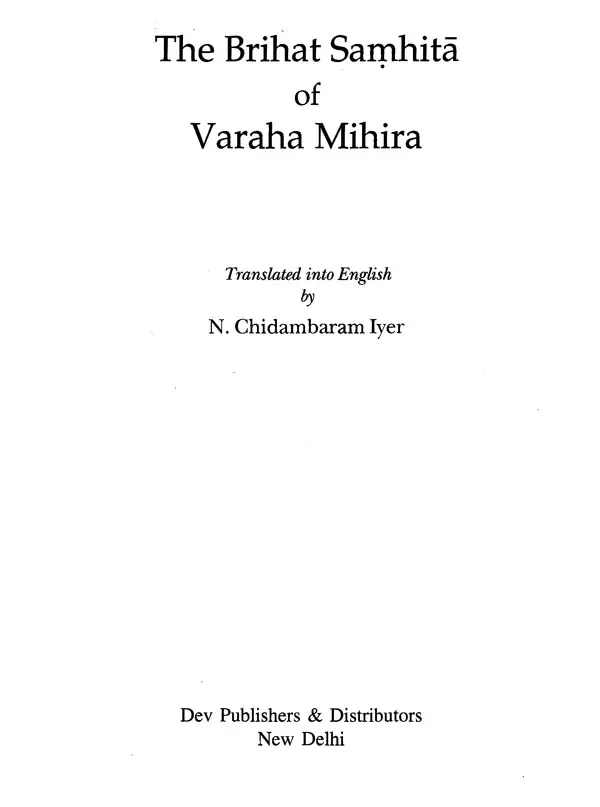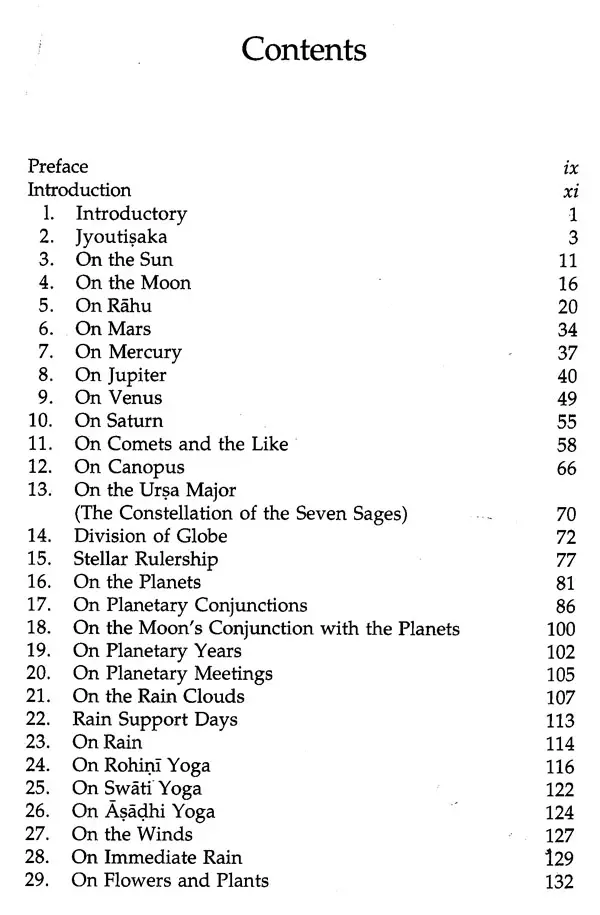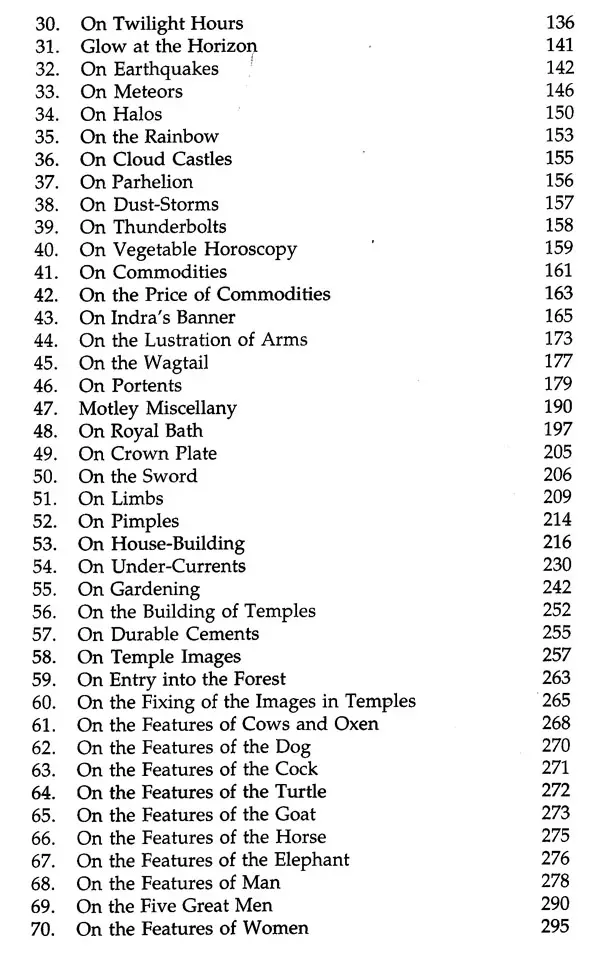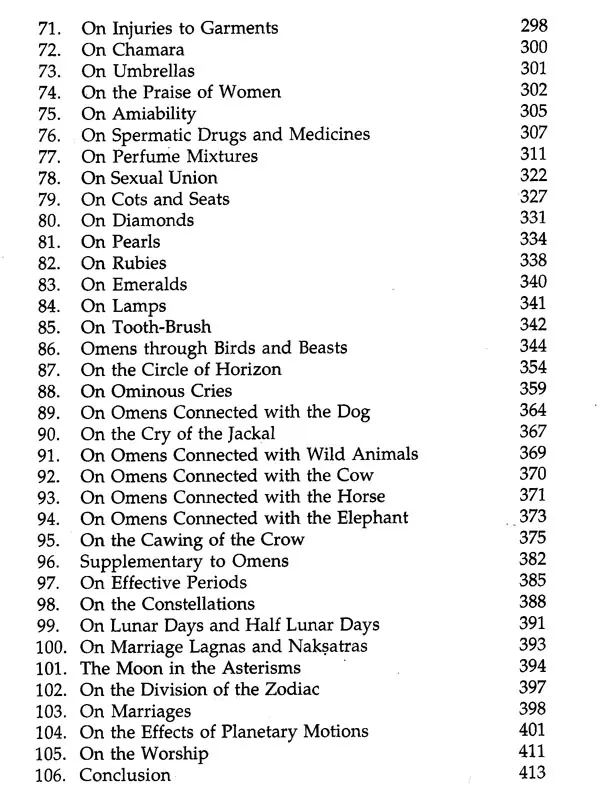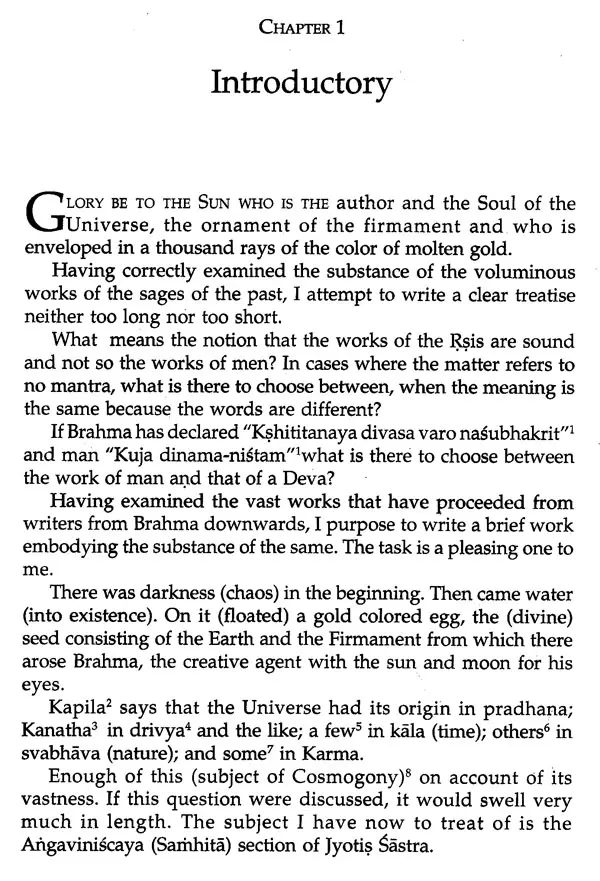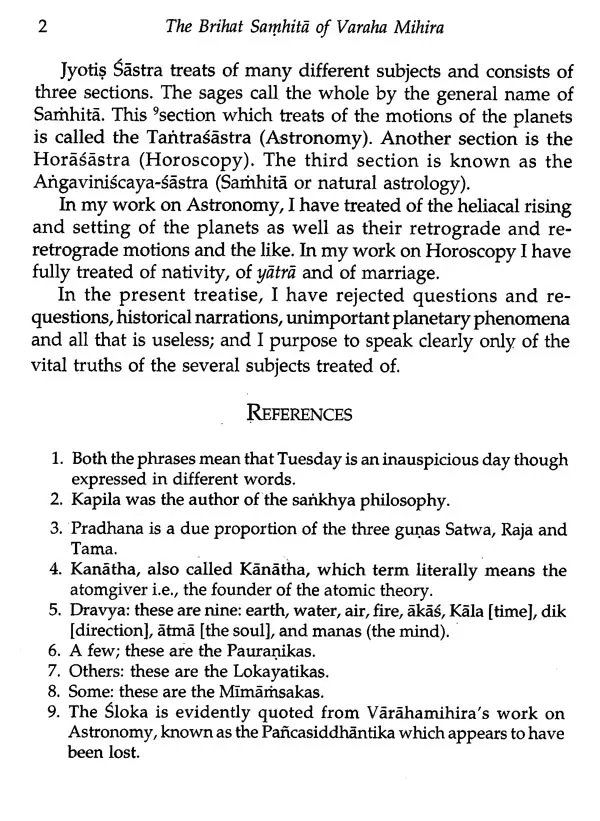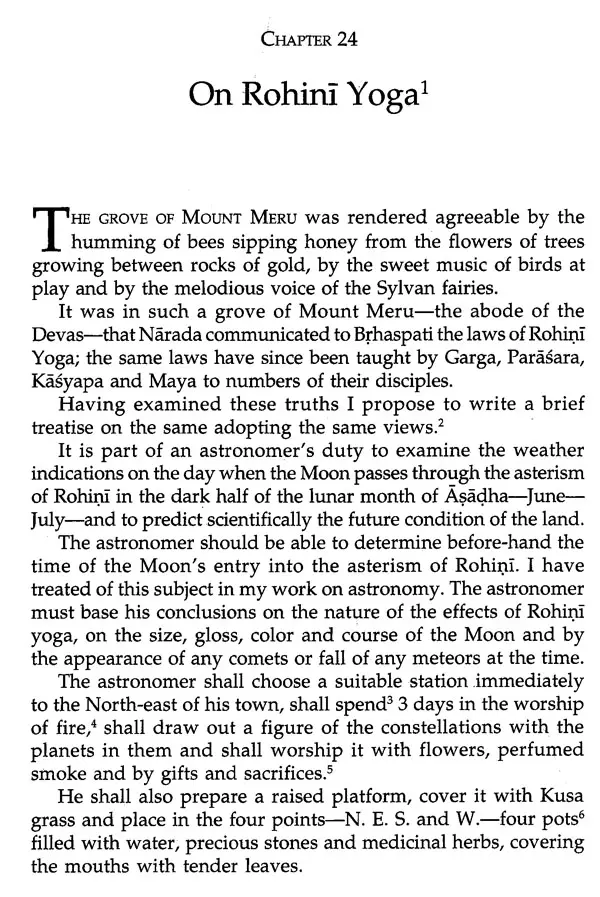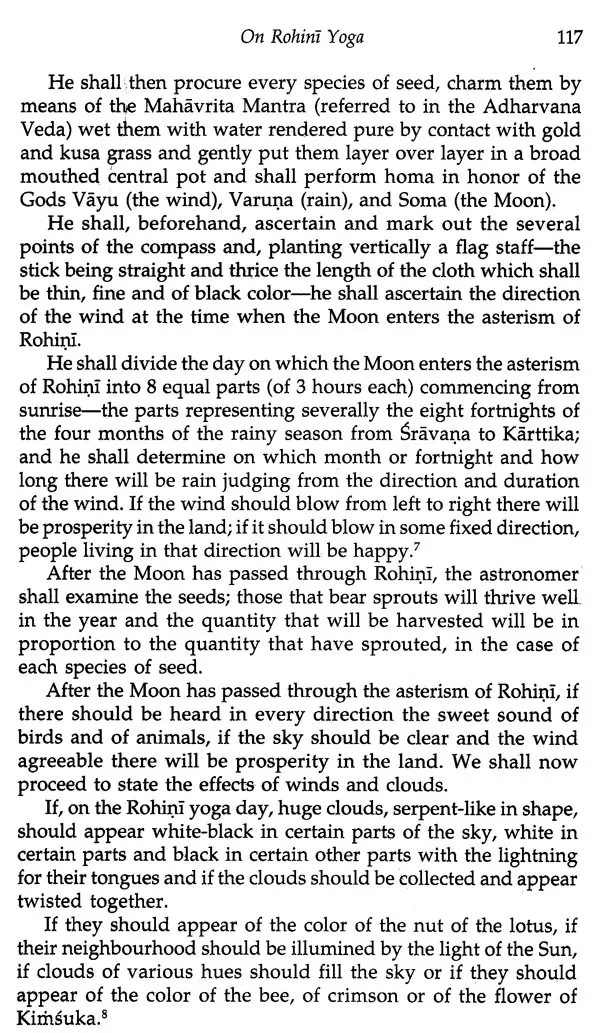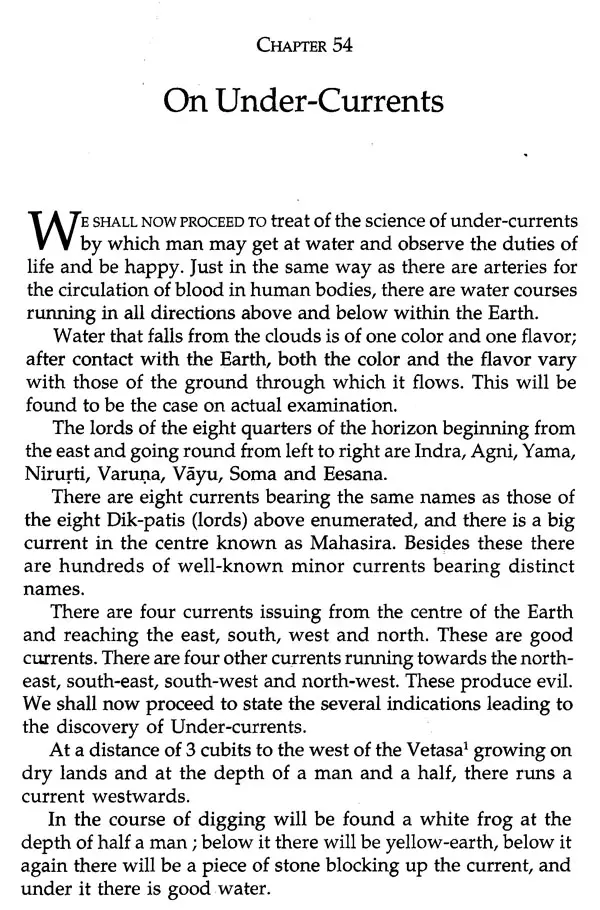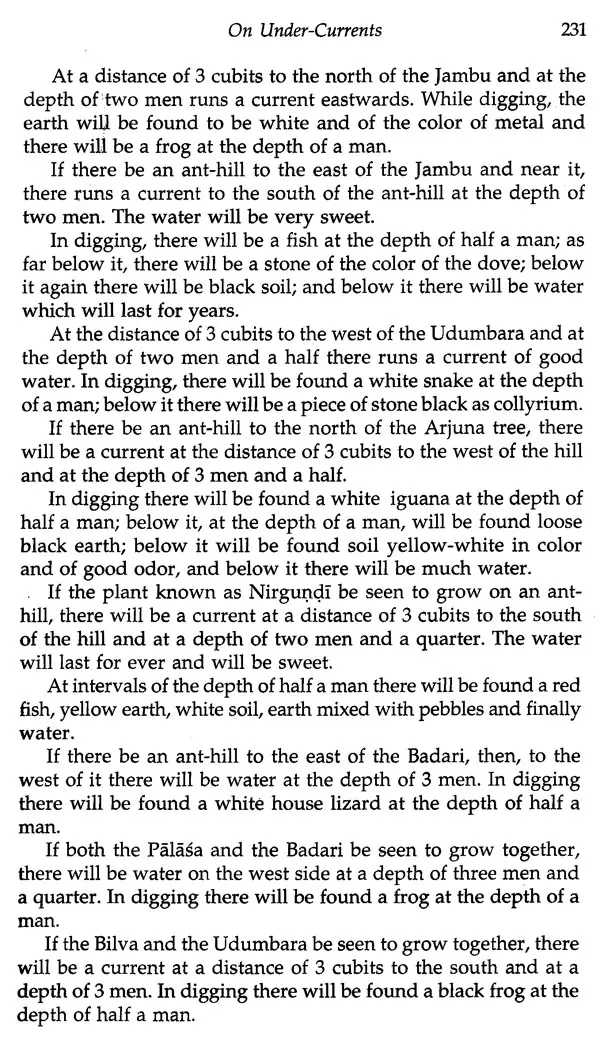
The Brihat Samhita of Varaha Mihira
Book Specification
| Item Code: | UAM136 |
| Author: | N. Chidambaram Iyer |
| Publisher: | Dev Publishers and Distributors |
| Language: | English |
| Edition: | 2022 |
| ISBN: | 9789387496811 |
| Pages: | 413 |
| Cover: | PAPERBACK |
| Other Details | 8.50 X 5.50 inch |
| Weight | 480 gm |
Book Description
India has long continued to be the centre of attraction not only in respect of its wealth and civilization but in that of its intellectual advancement. To it converged, as to a common focus, the eyes of foreigners from the earliest period of the world's history. It was the one fountain of knowledge from which issued streams to water distant lands of ignorance at every point of the compass, now yielding abundance of intellectual harvest. Time was when Indian wisdom shone resplendent, and, from its eminence, dazzled the eyes of distant nations-distant geographically and distant chronologically,- illumined every corner of the intellectual horizon and served as a beacon, lighting the paths of erring travellers. History is puzzled in its attempt to reach the data of Aryan civilization. Antiquarians are at logger-heads in their conclusions touching the age of Aryan learning.
Now it is well known that Aryan learning dates from the remotest antiquity. The Aryans have cultivated almost every department of knowledge. As the art of printing was unknown a large proportion of Aryan literature ha been washed into oblivion by the mighty ways of time. Not a few remain,
"Like Stranded wrecks the tide returning hoarse to sweep them from our sight". Unless rescued from their fate. But most of the Hindus, of the present day, can not use the books themselves.
The public can therefore do much if their eyes could only be opened to the importance of the subject, Most of the English knowing natives hardly know what these books treat of. I have many a time astonished young Collegians and graduates they were surprised to find that the Aryans knew what the Europeans know forgetting that these sciences were taken to the west from here.
Now it has come to my knowledge that in many Hindu families whole libraries, for want of inspection, are now being feasted on by moths and white ants and large quantities have already been emptied into the dustbins, the dccay having gone too for. English education, like Aaron's rod, appears to have devoured up every other educations and it has spread now throughout the land.
In the humble hope that the progressing ruin might be in a measure retarded, it is proposed to tell the present Indian generation in the language in which they will all and can all hear that, if they would exert a little, they might rescue from ruin a vast amount of splendid Aryan literature: As the property of a nation depends on its literature, the public are requested to for into societies for the collection and preservation of Aryan works.
Varaha Mihira was a native of Avanti and the son of Adityadasa who was an astronomer and from whom he received his education as he himself tells us in his Brhat Jataka (Chapter XXVI Verse 5). The date of his birth is involved in obscurity. It is the practice of all the Hindu astronomers to give this information in their works on astronomy; but unfortunately Varaha Mihira's work on astronomy, known as the Panchasidhantika, is now lost beyond all hope of recovery. The popular notion is that he was one of the 12 gems of the Court of Vikramarka. Now Vikrama Era, as we find from the Hindu calendar, dates from 56 B.C. whereas Varaha Mihira is considered to have flourished in the sixth century after Christ. So the Vikramarka of the first century before Christ must be different from the Vikramarka of the 6th century after Christ, unless we go to the length of believing that Vikramarka reigned, according to the Hindu legend, for a thousand years. We are not without parallel instances in the Christian Bible in which Enos is said to have lived 905 years, Cainan 910 years, Seth 912 years, Adam 930 years, Noah 950 years, Jared 962 years and Methusala 969 years; and yet poor non-biblical Vikramarka is grudged a comparatively small matter of 500 years.
Now A.D. 505 is considered by some to be the date of Varaha Mihira's birth and by others to be that of his Panchasidhantika, and A.D. 587 is thought to be the date of his death. It is also said that Varaha Mihira his quoted from Aryabhatta; that Aryabhatta was born is 476 A.D. and that this circumstance goes to prove that the dates given above are probably not incorrect. We shall now examine how far these dates are supported by evidence to be obtained from Varaha Mihira's own works-a circumstance which, curiously enough appears to have escaped the attention of even such eminent scholars as Colebrook, Davis, Sir William Jones and Others.
In verse 2 of Chapter III of his Brahat Samhita, Varaha Mihira says:
"At present the Solsticial points coincide with the beginning of Karkataka (Sign Cancer) and with the beginning of Makara (Sign Capricornus)."
**Contents and Sample Pages**
